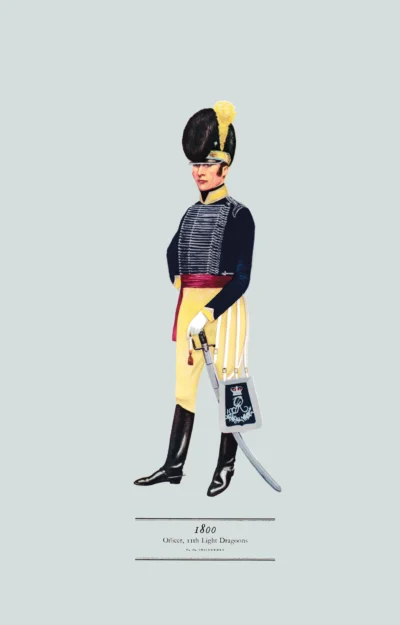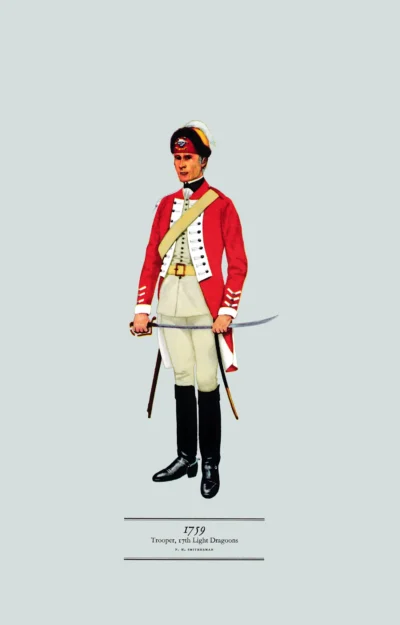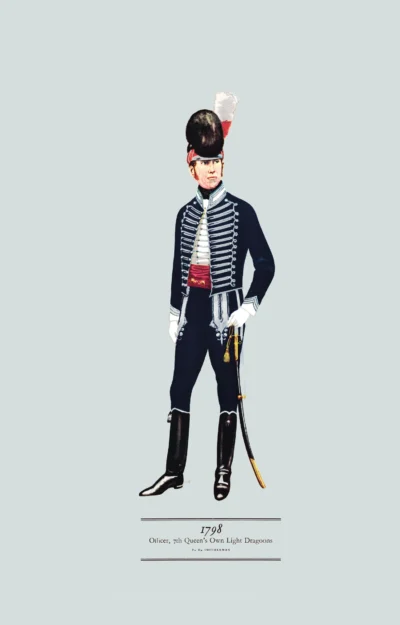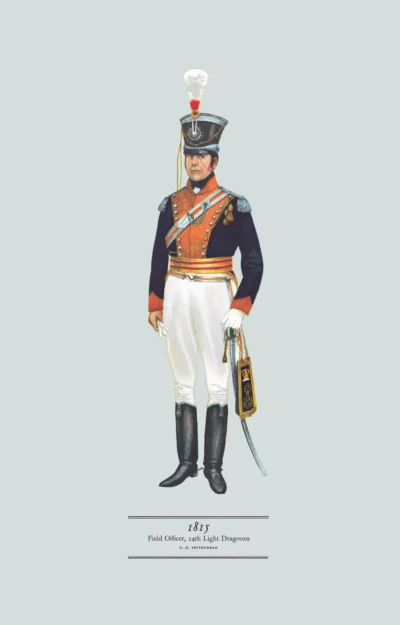Trooper, 3rd Horse, 1705 (2nd Dragoon Guards – Queen’s Bays)
£18.00Raised 1685; from 1959 1st The Queen’s Dragoon Guards – QDG (scroll down for a more detailed Description)
Published 1962 by © Hugh Evelyn Limited; drawn by Colonel Philip Henry Smitherman (1910-1982), Royal Corps of Signals
Size: c. 24 x 37cm [9 ½ ″ x 14 ½ ″] (may vary slightly from printers’ cut 50 years ago)
Printed on on medium cardstock weighing 144 g/sm2 faced in light greyish blue (RGB c. d5dede)
Print is STANDARD size – shipping is the same for 1 to 10 prints (based on largest print size in your order) – see Shipping & Returns

 Officer, 11th Light Dragoons, 1800 (Royal Hussars)
Officer, 11th Light Dragoons, 1800 (Royal Hussars) 












